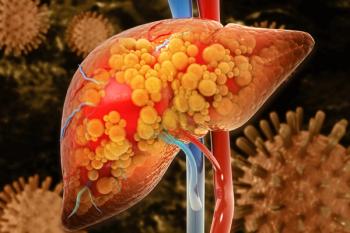
Age, Gender Impact Survival With IPAH, Finds South Korean Study
Drawing on over a decade’s worth of data, new research shows that the 10-year survival of over 9000 patients with idiopathic pulmonary arterial hypertension (IPAH) was 57%.
With scarce data available on survival rates among patients with idiopathic pulmonary arterial hypertension (
Their findings appeared recently in
Drawing on over a decade’s worth of data, the investigators found that the 10-year survival of over 9000 patients with IPAH was 57%. Among the patients, worse survival rates were seen if they were male, had a lower income, and had certain comorbidities.
“Our reported patterns of survival rate and death risk for IPAH should be considered in future research designs and policies for cardiovascular health care services, with particular attention paid to gender,” concluded the researchers. “Furthermore, the results of the current study can provide new information on the contemporary prevalence of IPAH and will be helpful for establishing health care policy regarding this rare, intractable, but clinically important disease.”
At 1 year, the survival rate among the patients was 89%, and 3-year survival was 79.8%. The researchers note that these findings were comparable to those from other studies, including from the US REVEAL registry, which showed 1- and 3-year survival rates of 91% and 74%, respectively, among patients with IPAH between 2006 and 2009.
The researchers cautioned that their data was leveraged from National Health Insurance benefit records, which may not include patients with IPAH who did not consult medical services or who paid out of pocket for their medical expenses, which may have resulted in an under- or overestimation of survival rates and death risk.
Among their cohort, the researchers found the most common cause of death was diseases of the circulatory system, accounting for nearly 1 in 3 deaths, followed by malignant neoplasms (16.8%), and diseases of the respiratory system (13.4%). Diabetes (HR, 1.29; 95% CI, 1.17-1.42), prior myocardial infarction (HR, 1.51; 95% CI, 1.24-1.83), atrial fibrillation (HR, 1.40; 95% CI, 1.15-1.70), prior ischemic stroke (HR, 1.44; 95% CI, 1.25-1.64), prior hemorrhagic stroke (HR, 1.48; 95% CI, 1.02-2.14), and malignant neoplasm (HR, 2.83; 95% CI, 2.47-3.23) were all associated with increased risk.
Notably, hypertension (HR, 0.87; 95% CI, 0.80-0.94) was associated with a decreased risk. According to the researchers, resting systolic blood pressure below 110 mm Hg is associated with worse outcomes in IPAH, suggesting baseline high blood pressure may explain the better outcomes among these patients in the current study.
With increasing age, the risk of survival decreased. At 60 to 69 years, the adjusted HR of IPAH was 1.81 (95% CI, 1.26-2.59), which jumped to 7.73 (95% CI, 5.43-11.0) among patients aged 70 to 79 years. The researchers noted that because their data largely comprised pediatric and older patients, both groups can easily receive a misdiagnosis when only echocardiography is used. Males also had increased risk, with an adjusted HR of 1.15 (95% CI, 1.06-1.24).
“Male gender is a well-known risk when compared to women in cardiovascular diseaseand lower life expectancy compared to women in other diseases,” explained the researchers. “In the REVEAL 2.0 calculator, male age > 60 years is also a risk factor for PAH prognosis, which is similar result to our study.”
Among males, 1-, 3-, 5-, and 10-year survival rates were88.4%, 78.9%, 71.3%, and 55.9%, respectively, compared with 89.4%, 80.4%, 72.9%, and 57.8% among females.
Reference
Jang S, Kim E, Huh J, et al. A retrospective population-based survival study of idiopathic pulmonary arterial hypertension in Korea. J Korean Med Sci. 2022;37(10):e80
Newsletter
Stay ahead of policy, cost, and value—subscribe to AJMC for expert insights at the intersection of clinical care and health economics.












































